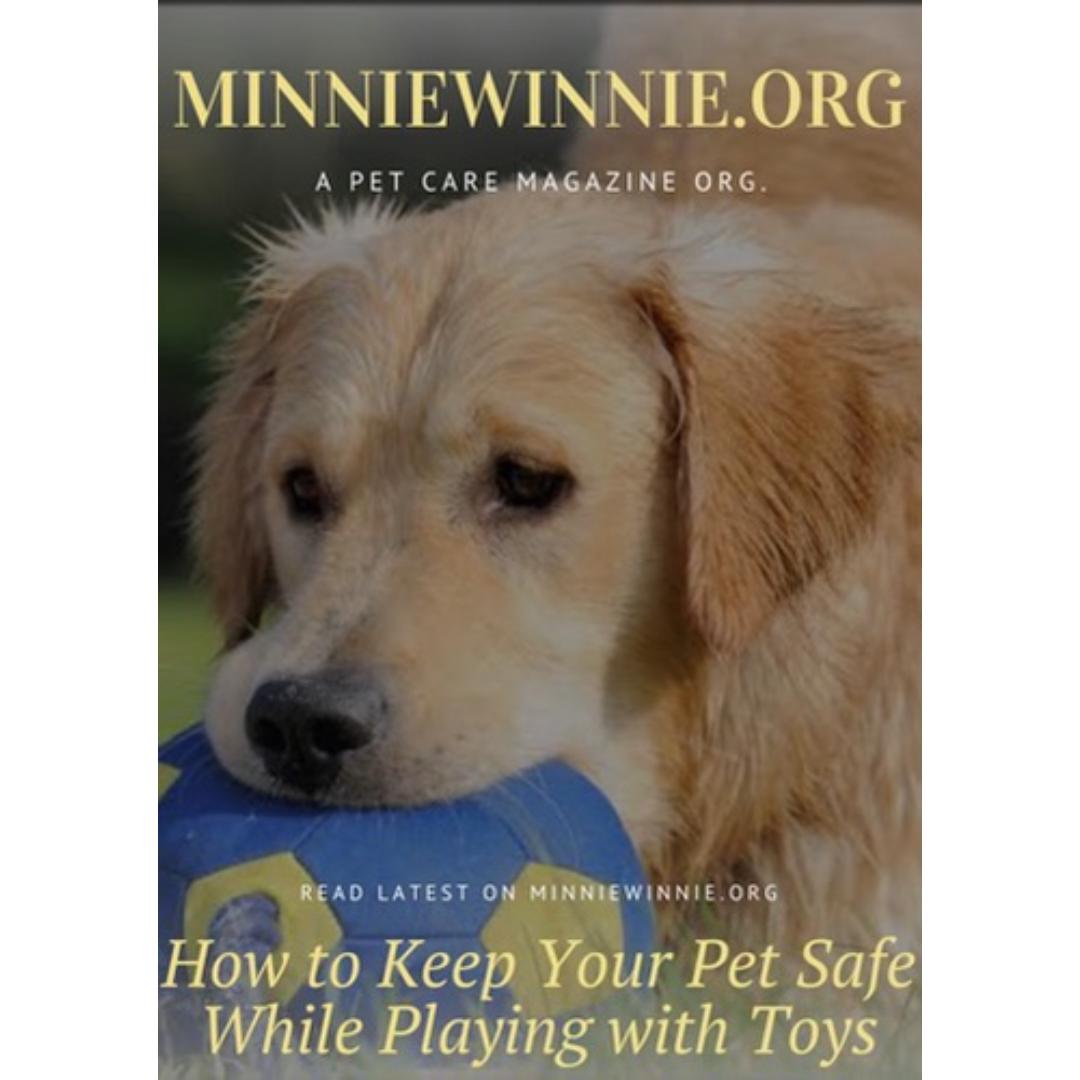How to Keep Your Pet Safe While Playing with Toys
Playing with toys is an essential activity for pets, offering mental stimulation, physical exercise, and a way to bond with their owners. However, not all toys are created equal, and some can pose serious risks to your pet’s safety if not chosen or used properly. Ensuring that playtime is both fun and safe requires careful selection of toys, supervision, and an understanding of your pet’s behavior. Here’s what you need to know to keep your pet safe while playing with toys.
1. Choose the Right Toys for Your Pet
The first step in ensuring your pet’s safety during playtime is selecting appropriate toys. Consider the following factors when choosing toys:
Size Matters
- Avoid Small Toys for Large Pets: Small toys can be a choking hazard for larger pets. Always select toys that are large enough that your pet cannot swallow them whole.
- Choose the Right Size for Small Pets: For smaller pets, avoid toys that are too large or heavy, as they may be difficult for them to handle or could cause injury.
Material Safety
- Non-Toxic Materials: Ensure that the toys are made from non-toxic materials. Pets often chew or lick their toys, so it’s crucial that they don’t ingest harmful chemicals.
- Durability: Choose toys that are durable and can withstand your pet’s play style. If your pet is an aggressive chewer, opt for toys specifically designed for heavy chewing to prevent them from breaking into small, potentially dangerous pieces.
Avoid Sharp Edges and Loose Parts
- Inspect for Sharp Edges: Toys with sharp edges or points can cause cuts or injuries to your pet’s mouth or paws. Always check the toy for any rough or sharp areas before giving it to your pet.
- Watch for Loose Parts: Toys with small parts that can come loose, such as buttons, squeakers, or eyes, can be swallowed or choked on. Opt for toys that are well-constructed and have securely attached parts.
2. Supervise Playtime
Even with the safest toys, supervision is key to preventing accidents and injuries. Here’s why supervision is essential:
Prevent Choking and Ingestion
- Monitor Chewing Behavior: Pets, especially dogs, may try to tear apart their toys. If they manage to break off a piece, they could choke or swallow it, leading to digestive blockages or choking hazards. Keep an eye on your pet to intervene if they start chewing too aggressively.
Identify Worn-Out Toys
- Regular Inspection: Toys can wear out over time, becoming frayed, torn, or broken. Regularly inspect your pet’s toys for signs of wear and tear, and discard any that have become unsafe.
Engage in Interactive Play
- Interactive Play: Engaging in play with your pet not only strengthens your bond but also allows you to control the intensity and duration of playtime. Whether it’s a game of fetch, tug-of-war, or using a laser pointer, your involvement ensures that play remains safe and appropriate.
3. Understand Your Pet’s Play Style
Each pet has a unique play style, and understanding this can help you choose toys that are both safe and enjoyable for them:
Aggressive Chewers
- Durable Chew Toys: For pets that love to chew, invest in high-quality, durable chew toys designed for aggressive chewers. Avoid plush toys with stuffing that can be easily ripped out and ingested.
Gentle Players
- Soft Toys for Gentle Pets: Some pets prefer to carry toys around or play gently. For these pets, soft toys or plush animals can be a good choice, as long as they’re well-made and don’t contain small parts that can come loose.
High-Energy Pets
- Active Toys: For high-energy pets, toys that encourage physical activity, like balls, ropes, or interactive puzzles, can help burn off excess energy. Ensure that these toys are sturdy enough to withstand rough play.
4. Avoid Potentially Dangerous Toys
Certain types of toys can pose a higher risk to pets and should be used with caution or avoided altogether:
Rawhide Chews
- Choking Hazard: While rawhide chews are popular, they can become a choking hazard if your pet bites off large pieces. Consider safer alternatives like rubber chew toys or dental chews.
String and Ribbon
- Risk of Ingestion: String, ribbon, and yarn are particularly dangerous for cats, as they can become entangled in the intestines if swallowed, leading to serious medical emergencies. Always supervise play with these materials or avoid them altogether.
Tennis Balls
- Tooth Wear and Choking: Tennis balls can wear down a dog’s teeth over time due to their abrasive surface. Additionally, large dogs may compress a tennis ball in their mouths, creating a choking hazard. Opt for rubber balls specifically designed for dogs instead.
5. Know When to Replace or Discard Toys
No toy lasts forever, and knowing when to replace or discard a toy is crucial for your pet’s safety:
- Discoloration and Damage: If a toy shows signs of significant wear, discoloration, or damage, it’s time to replace it. Broken toys can be a choking hazard or cause injuries.
- Missing Parts: If a toy is missing parts (like a squeaker or a piece of fabric), it’s no longer safe for your pet to play with.
- Loss of Interest: If your pet loses interest in a toy, it may be a sign that it’s time to rotate in new toys to keep them mentally stimulated.
Conclusion: Safe Play Equals Happy Pets
Playing with toys is one of the joys of having a pet, offering both mental and physical benefits. However, ensuring that playtime is safe requires careful selection of toys, regular supervision, and a good understanding of your pet’s play style. By choosing the right toys, monitoring their condition, and understanding the risks, you can create a safe and enjoyable environment for your pet to play and thrive. Remember, a safe pet is a happy pet, and with the right precautions, playtime can be a fun and worry-free experience for both of you.










